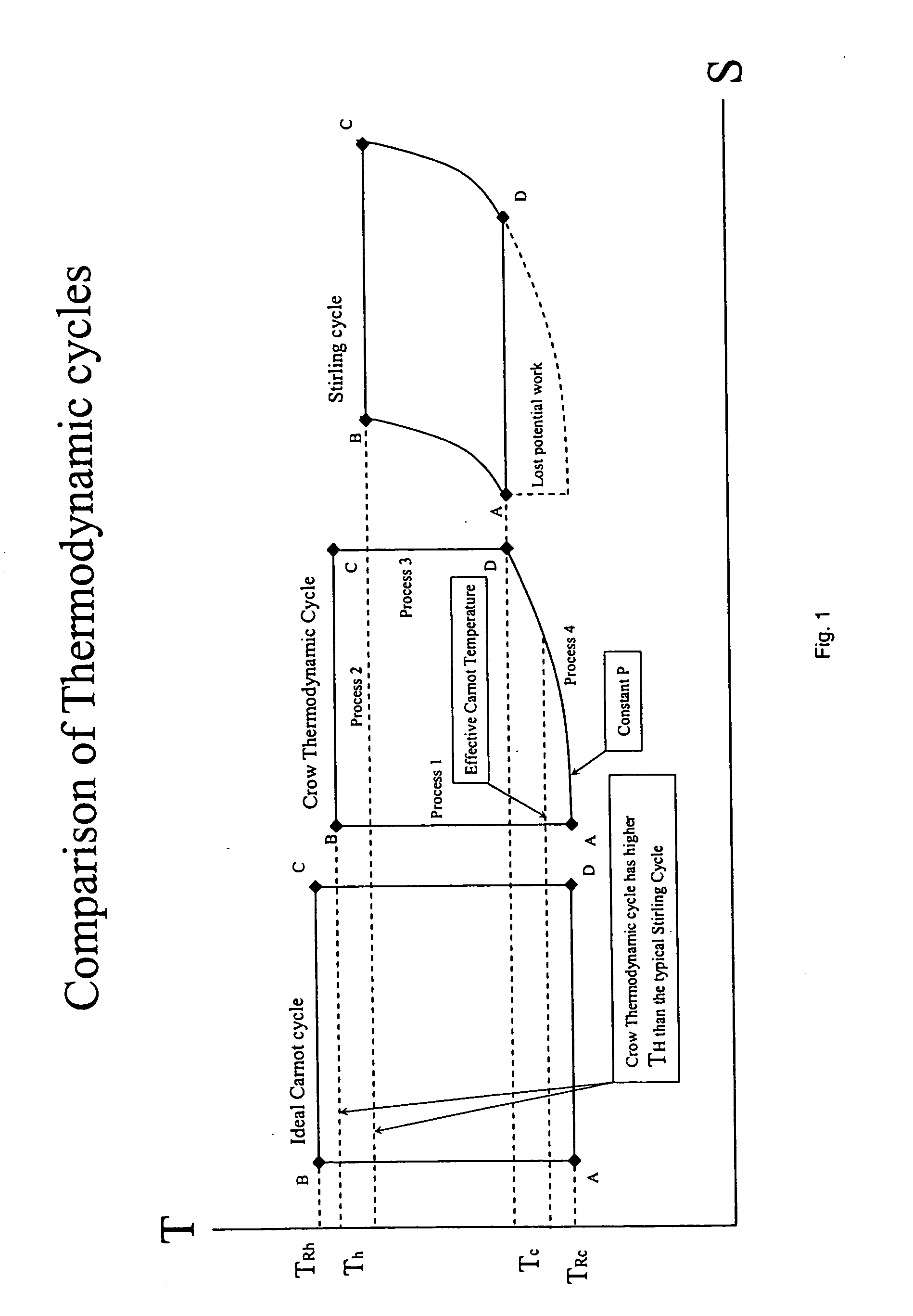Method and apparatus for converting thermal energy to mechanical energy
a technology of mechanical energy and thermal energy, applied in the field of engines, can solve the problems of engine failure to reach the full potential within a reasonable cost and package, engine efficiency is limited all current widespread use technologies are limited in efficiency to approximately less than 40%, etc., to achieve simple thermal management, improve efficiency, and improve efficiency
- Summary
- Abstract
- Description
- Claims
- Application Information
AI Technical Summary
Benefits of technology
Problems solved by technology
Method used
Image
Examples
Embodiment Construction
)
[0049] The present invention relates to an innovative apparatus and method for converting thermal energy into mechanical energy. Reference is made to a thermodynamic cycle that will sometimes be called the “Crow Thermodynamic Cycle,” the “Crow Cycle” or “the subject cycle.” Also in the course of this disclosure reference will be made to a number of mathematical variables. For convenience, the several variables and their meanings are set forth in Table 1.
TABLE 1List of VariablesηThermodynamic efficiency, as measured by total work divided by thermal heatηidealThermodynamic efficiency, assuming the working fluid reaches reservoirTcLow temperature reached by the working fluid during the thermodynamic cycleThHigh temperature reached by the working fluid during the thermodynamic cycleTRcCold reservoir temperatureTRhHot reservoir temperatureTc,eEffective isothermal low temperature reached by the working fluidTh,eEffective isothermal high temperature reached by the working fluidTATempera...
PUM
 Login to View More
Login to View More Abstract
Description
Claims
Application Information
 Login to View More
Login to View More - R&D
- Intellectual Property
- Life Sciences
- Materials
- Tech Scout
- Unparalleled Data Quality
- Higher Quality Content
- 60% Fewer Hallucinations
Browse by: Latest US Patents, China's latest patents, Technical Efficacy Thesaurus, Application Domain, Technology Topic, Popular Technical Reports.
© 2025 PatSnap. All rights reserved.Legal|Privacy policy|Modern Slavery Act Transparency Statement|Sitemap|About US| Contact US: help@patsnap.com



